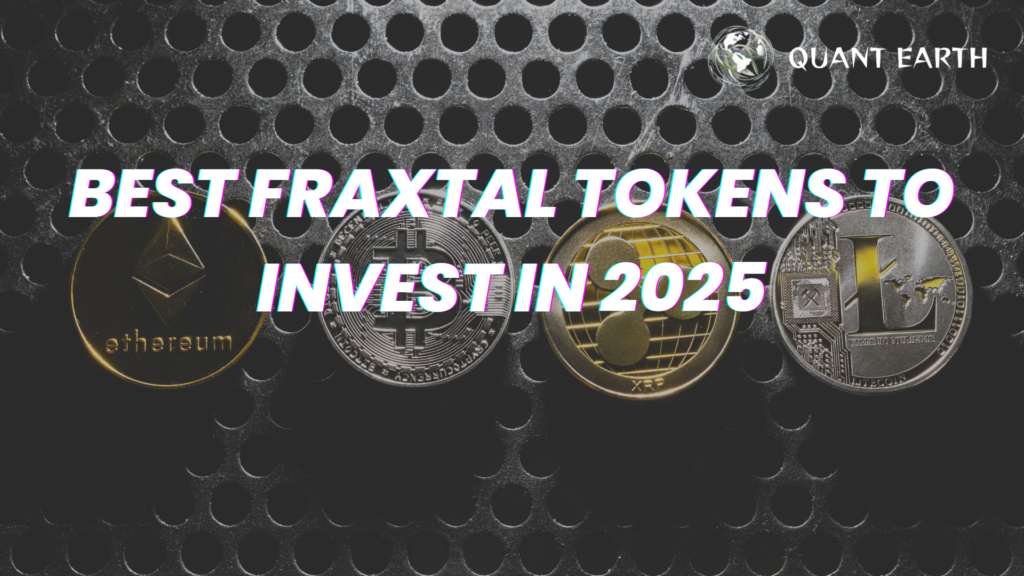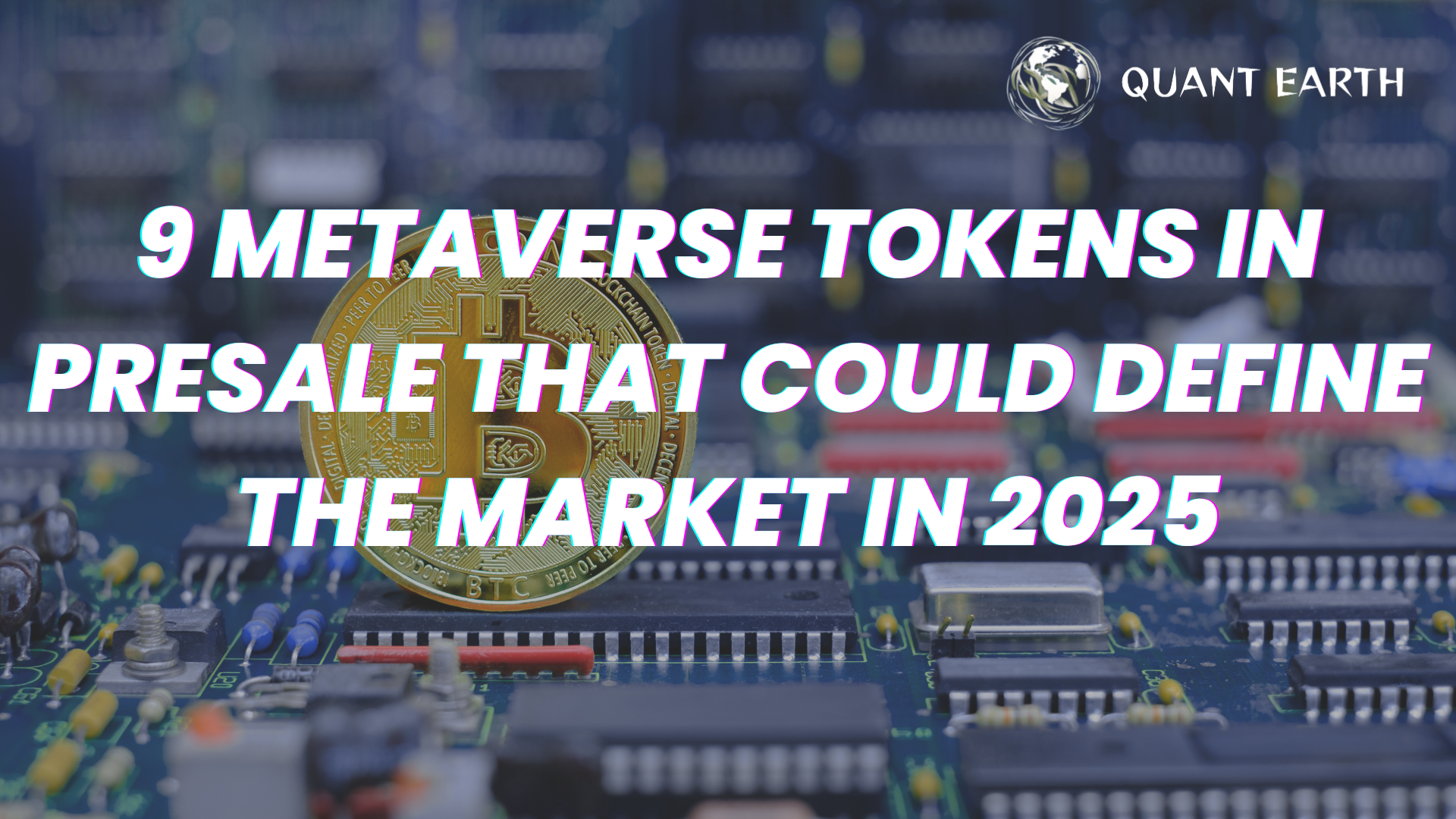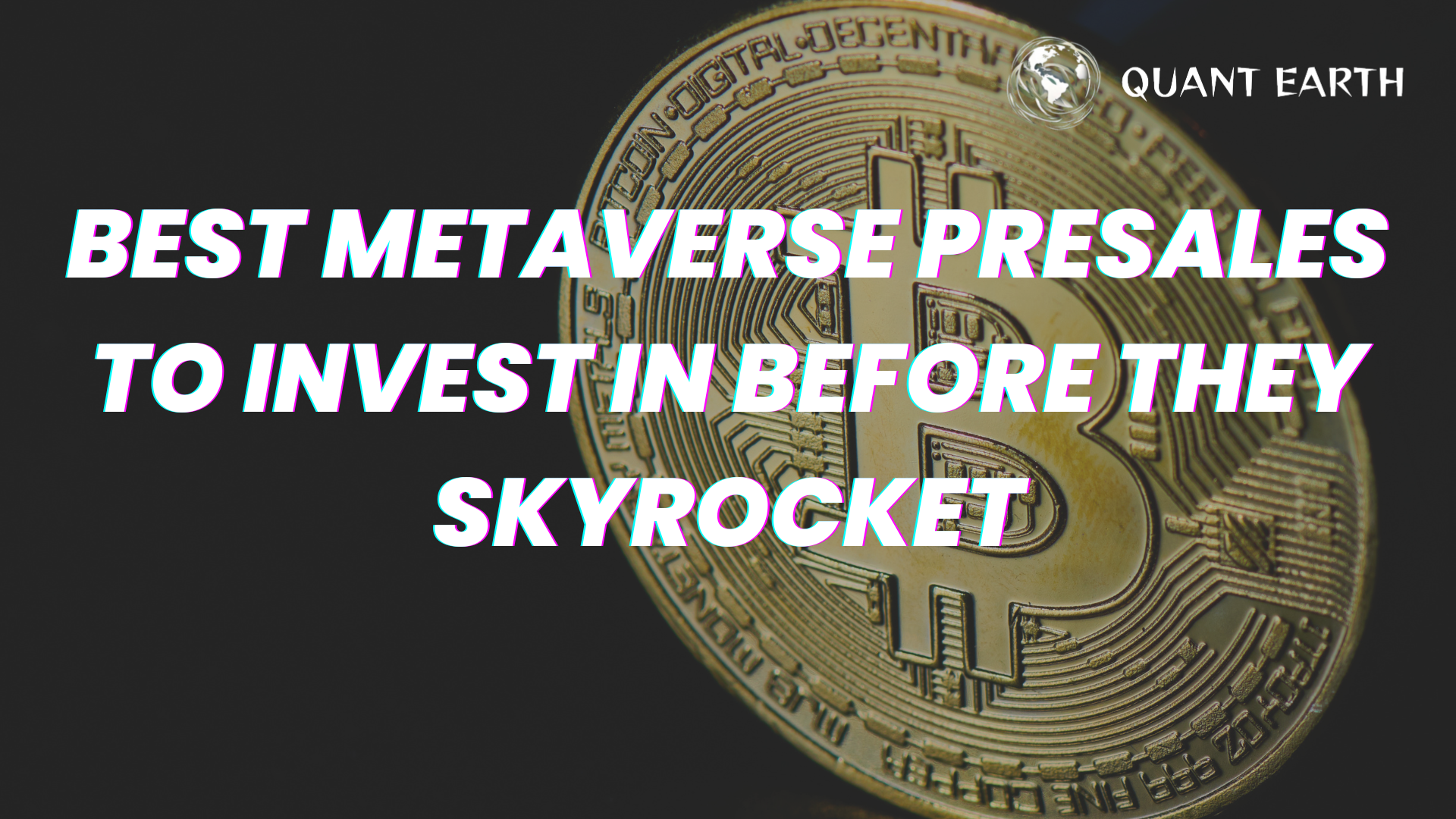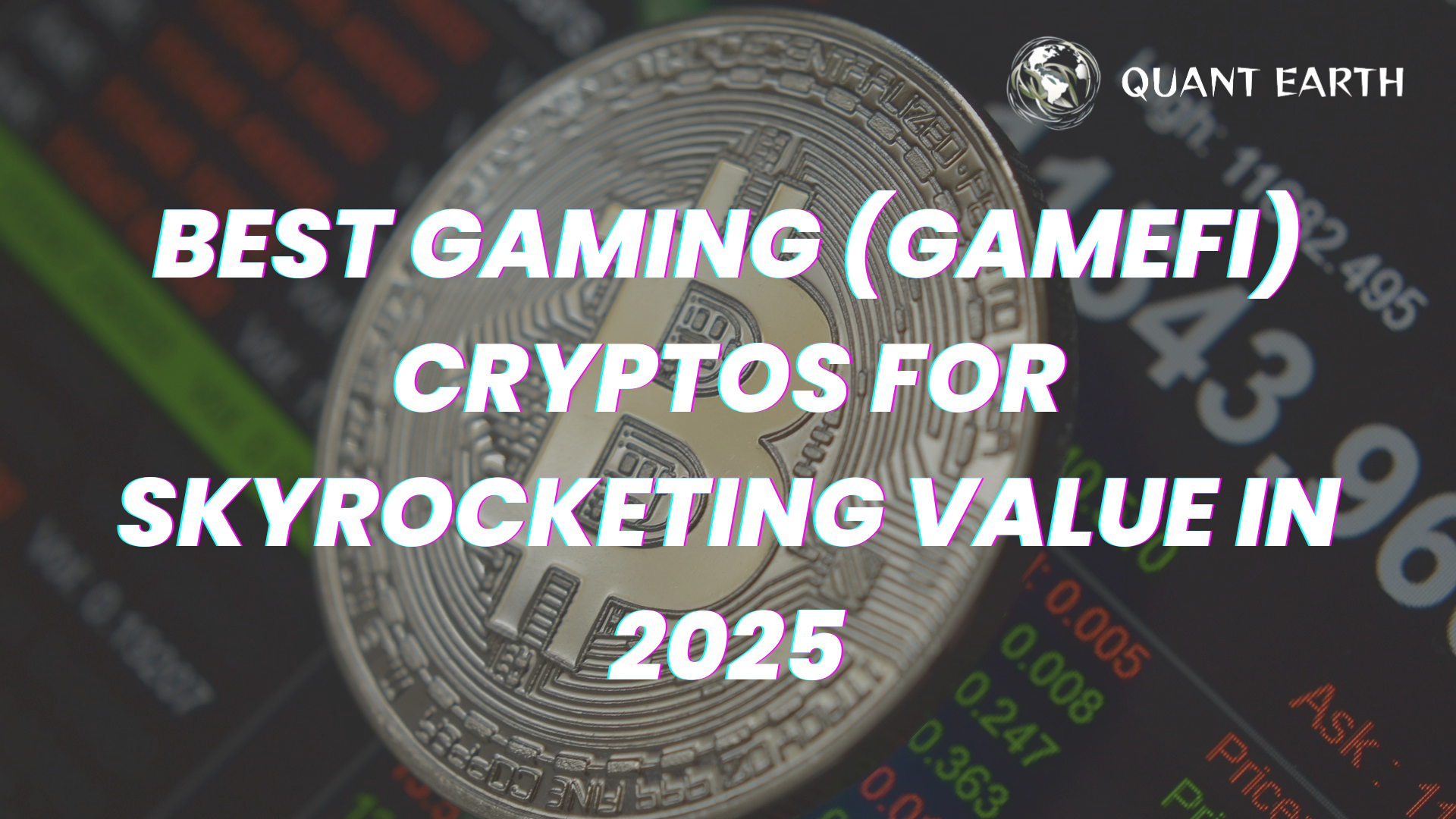The popularity of Fraxtal blockchain within the decentralized finance (DeFi) and cryptocurrency domains intensifies as it continues evolving. Investors actively monitor promising Fraxtal tokens through its evolving ecosystem because they seek profitable opportunities for the near future. This piece focuses on the assessment of Fraxtal tokens that could deliver high investment returns in 2025 by examining Quant Earth ($QET) as well as Play PEPE ($PEPP) and six additional coins to add to your financial portfolio.
- Quant Earth ($QET)
- Play PEPE ($PEPP)
- FraxChain ($FRC)
- FraxDollar ($FUSD)
- FraxLink ($FLK)
- FraxNFT ($FNFT)
- FraxVault ($FVLT)
- FraxToken ($FXT)
- FraxEnergy ($FEN)
Quant Earth ($QET)
The Fraxtal ecosystem will see Quant Earth ($QET) rise as one of its most compelling tokens for investors to monitor until 2025. The platform depends on this token to achieve its main purpose of designing an environmentally friendly blockchain system. The Quant Earth developers aim to employ blockchain solutions for addressing practical environmental problems through their climate change and carbon emission initiatives. The crypto industry search for green solutions makes Quant Earth emerge as a promising project that demonstrates extended growth prospects. Then token stands out as an investment opportunity because it offers vital usage throughout the ecosystem and supports global sustainability goals.
Click here to buy Quant Earth $QET Presale Now
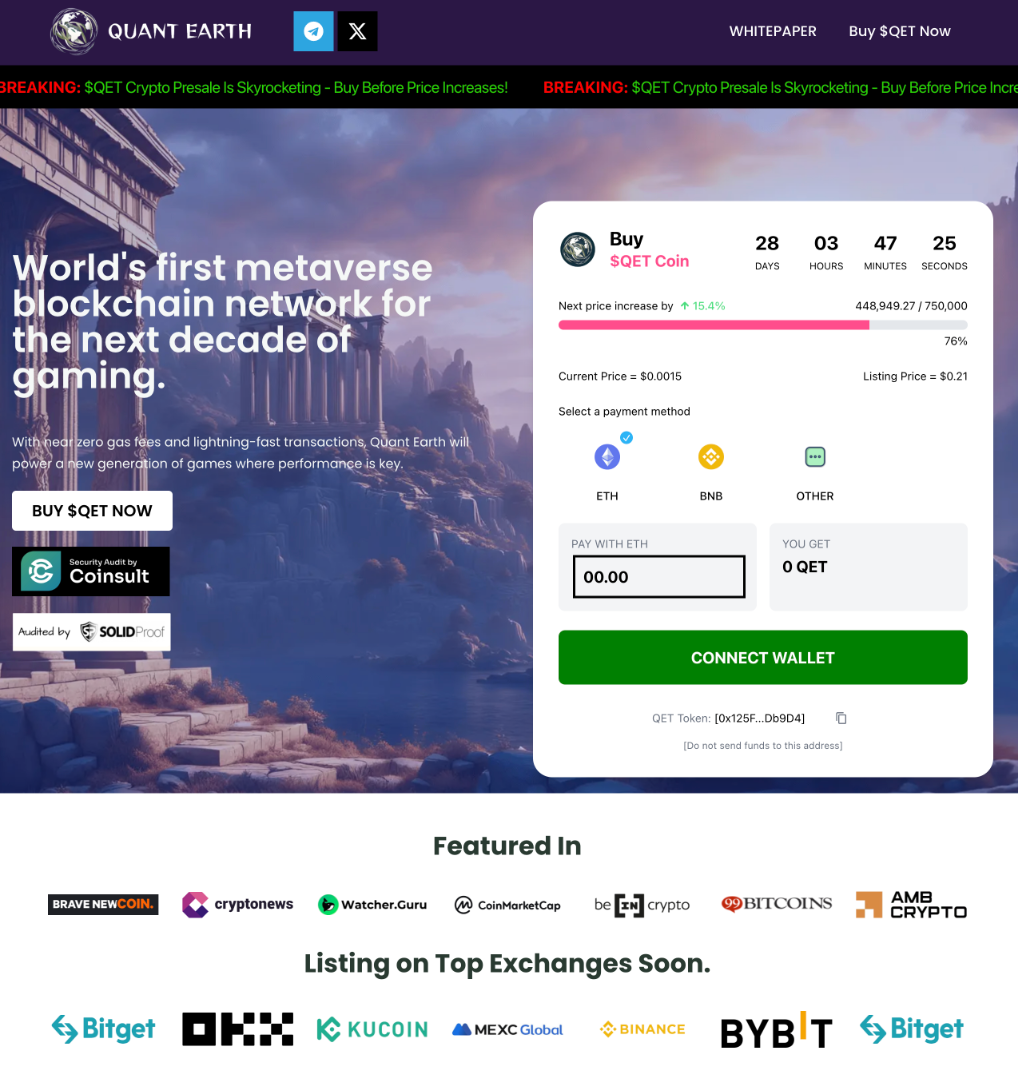
Play PEPE ($PEPP)
The Fraxtal ecosystem contains Play PEPE ($PEPP) as an outstanding token that attracts investors interested in innovative projects with fun and distinctive features. The decentralized token unites online gaming with decentralized finance through the PEPE meme culture. Play PEPE ($PEPP) provides users with a gaming system featuring meme characters to participate in decentralized financial activities. Play PEPE stands out for its dedication to create a gaming and meme space network which will target broad adoption thus providing lucrative investment potential.
FraxChain ($FRC)
The decentralized infrastructure of the Fraxtal blockchain depends on FraxChain ($FRC) as its fundamental token. The native Fraxtal token serves essential security functions for the network and it enables usage of smart contracts and decentralized applications (dApps). Expert analysts anticipate an increase in $FRC demand within the Fraxtal ecosystem because it represents a strong long-term investment opportunity.
FraxDollar ($FUSD)
Stablecoin $FUSD serves as a decentralized price-stable token on Fraxtal to offer decentralized advantages with stability benefits. The maturation of the Fraxtal ecosystem will amplify the importance of stablecoins like $FUSD for investors who need volatility protection. The stable value retention of $FUSD through decentralized finance applications gives it great potential for 2025.
FraxLink ($FLK)
The Fraxal ecosystem relies on FraxLink ($FLK) because it functions as both an essential utility token and a method to govern the system and pay network fees. As Fraxtal grows in popularity the market value of FraxLink is predicted to increase because users need it to access decentralized applications on Fraxtal. The rising value of $FLK will depend on the expansion of Fraxtal’s ecosystem thus becoming a token investors should monitor during future years.
FraxNFT ($FNFT)
The Fraxtal blockchain powers the implementation of FraxNFT through its FraxNFT ($FNFT) token to serve the fast-growing NFT (non-fungible token) market on the blockchain. The growing popularity of NFTs throughout different business sectors creates a favorable environment for FraxNFT to expand its reach. The primary transaction and NFT minting tool on Fraxtal operates through $FNFT while serving both art markets and collectible and gaming purposes. The combination of NFT market expansion and Fraxtal network expansion creates compelling prospects for $FNFT investors.
FraxVault ($FVLT)
Inside the Fraxtal ecosystem users access FraxVault ($FVLT) which helps them manage and create decentralized investment portfolios. The platform’s ability to allow users into fractional investment deals makes $FVLT capable of changing traditional investment methods. The growth of Defi will make FraxVault tokens more vital to develop convenient investments available to everyday users.
FraxToken ($FXT)
Token holders of $FXT (FraxToken) manage the governance decision-making and future direction development for Fraxtal blockchain. The value of $FXT governance token should increase when Fraxtal network obtains widespread adoption within decentralized networks. Investors desiring Fraxtal growth participation should choose $FXT among their primary portfolio assets because it represents the blockchain’s governance token.
FraxEnergy ($FEN)
The Fraxtal ecosystem features FraxEnergy ($FEN) which serves as a token designed for sustainable energy projects development. The renewable energy commitment of FraxEnergy enables it to back projects which minimize blockchain operation emissions. Sustainability concerns let $FEN develop into an increasingly valuable crypto asset because investors will prioritize green blockchain solutions.
Conclusion
In 2025 the Fraxtal blockchain maintains its expansion through various promising token investments catering to investors who seek opportunities in decentralized finance and blockchain technology innovation. The key tokens that offer potential for high growth include Quant Earth ($QET) and Play PEPE ($PEPP) but FraxChain ($FRC), FraxDollar ($FUSD) and FraxNFT ($FNFT) are additional options investors should track. The Fraxtal ecosystem depends on various tokens that play separate functions and show strong potential to rise in market value due to blockchain adoption expanding in coming years.


